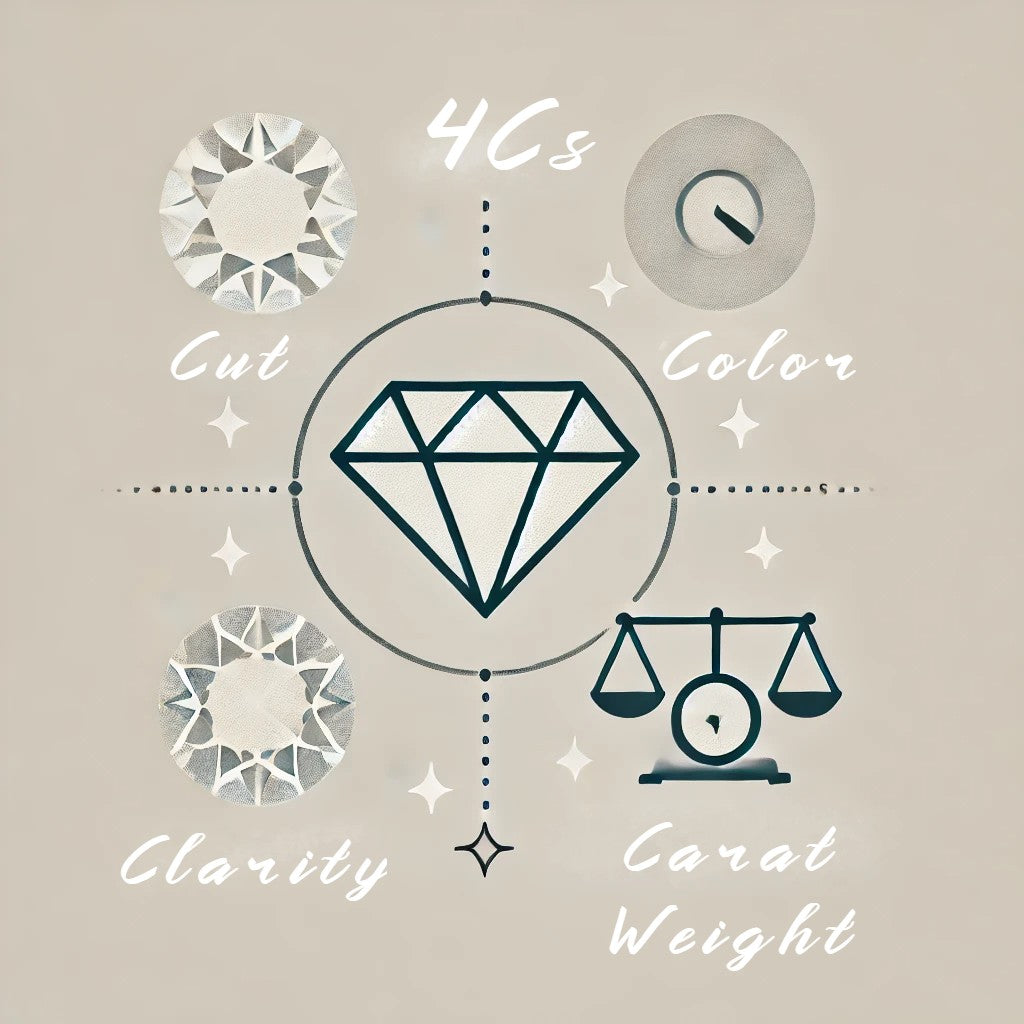
4Cs of Diamonds
Share
The 4Cs—Cut, Color, Clarity, and Carat Weight—are the primary characteristics that determine a diamond's quality and value. Grasping these factors is crucial for anyone looking to purchase a diamond. Here’s a breakdown:
1. Cut
The cut of a diamond reflects how well it has been crafted from its raw form. This aspect is key to the diamond's brilliance and how it sparkles. A diamond that is expertly cut will reflect light internally and disperse it through the top, creating the iconic sparkle. Cut quality is graded from Excellent to Poor, with better cuts resulting in a more luminous diamond.
Considerations:
- Proportion: The angles and dimensions of the diamond's facets.
- Symmetry: The evenness and alignment of the diamond's facets.
- Polish: The smoothness of the diamond's surface.
2. Color
Diamonds are graded on a color scale ranging from D (completely colorless) to Z (noticeably colored). The absence of color in a diamond increases its rarity and value. Colorless diamonds allow more light to pass through, enhancing their brilliance. However, diamonds with unique hues, such as blue or pink, can also be highly desirable and valuable.
Considerations:
- D-F: Completely colorless, extremely rare and valuable.
- G-J: Nearly colorless, with slight traces of color.
- K-Z: Increasing degrees of color, often less expensive.
3. Clarity
Clarity measures the presence of internal flaws (inclusions) and external imperfections (blemishes). Diamonds with fewer and smaller imperfections are rarer and typically more valuable. Clarity is graded from Flawless (no inclusions or blemishes visible under 10x magnification) to Included (imperfections visible to the naked eye).
Considerations:
- Flawless (FL) and Internally Flawless (IF): Extremely rare, with no visible imperfections.
- Very Very Slightly Included (VVS1 and VVS2): Very small inclusions, hard to detect under 10x magnification.
- Very Slightly Included (VS1 and VS2): Minor inclusions, noticeable only under magnification.
- Slightly Included (SI1 and SI2): Visible under magnification, but often not to the naked eye.
- Included (I1, I2, I3): Visible inclusions, potentially impacting brilliance.
4. Carat Weight
Carat weight indicates the size of the diamond, with one carat equal to 200 milligrams. Larger diamonds are rarer and generally more valuable, but carat weight alone does not determine value. The other three Cs—Cut, Color, and Clarity—also significantly influence a diamond's overall worth.
Considerations:
- Weight vs. Size: Carat refers to weight, not dimensions. Two diamonds with the same carat weight can differ in size based on their cut.
- Price: As carat weight increases, the price per carat usually rises exponentially.
Conclusion
When selecting a diamond, it’s important to consider all four Cs collectively rather than in isolation. The ideal diamond for you will depend on your personal preferences and budget, finding the right balance among these qualities. Understanding the 4Cs equips you to choose a diamond that is both stunning and valuable.
